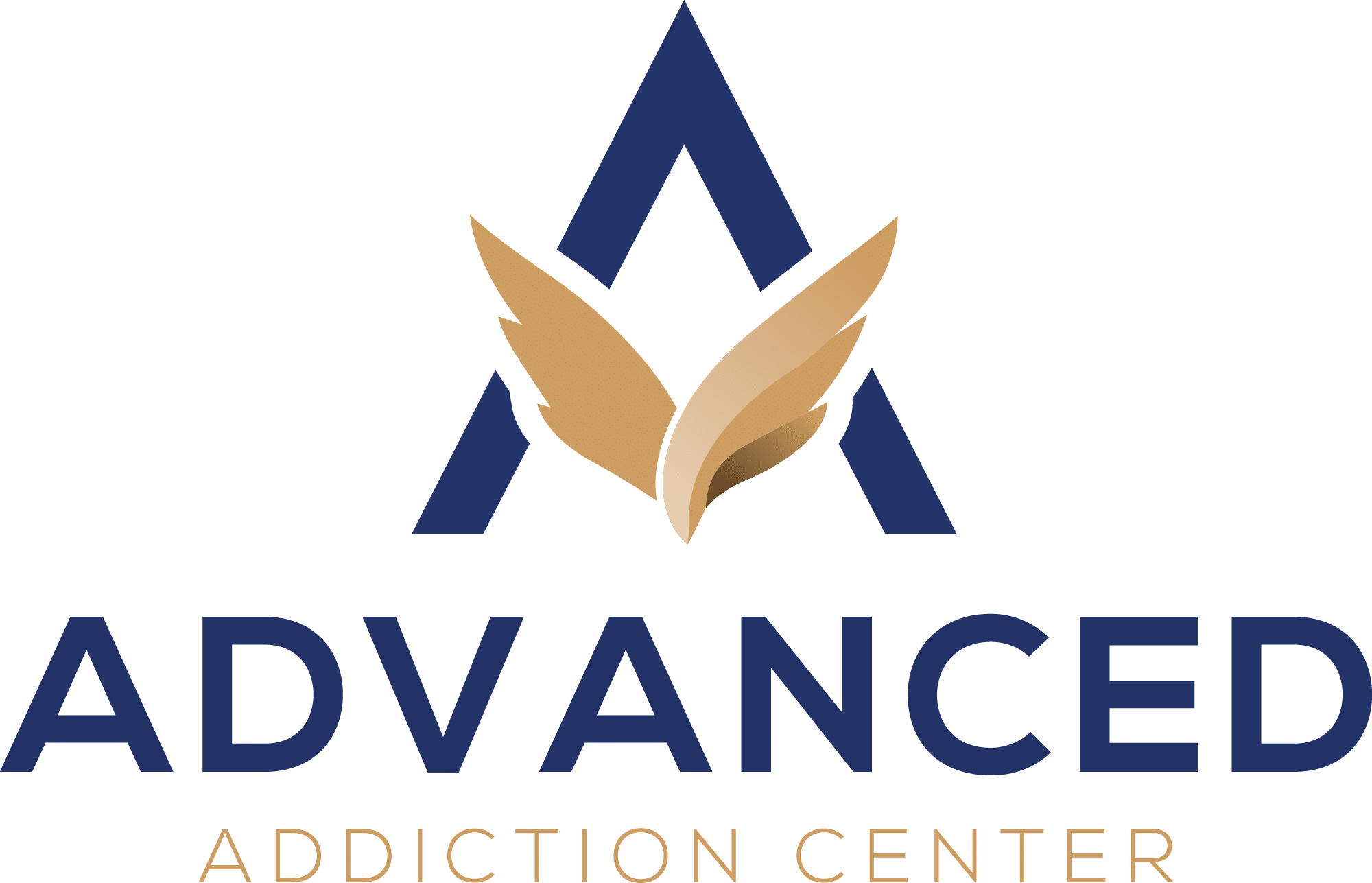Understanding Opioid Dependence and Risks
Opioids are powerful medications designed to manage moderate to severe pain by binding to specific receptors in your brain and nervous system. They include prescription painkillers like oxycodone, hydrocodone, morphine, and fentanyl, as well as illegal substances like heroin. Healthcare providers prescribe opioids for various conditions, including post-surgical recovery, chronic pain management, and cancer-related discomfort.
What is Opioid Dependence?
Opioid dependence develops naturally when your body adapts to regular opioid use, regardless of whether you’re taking them as prescribed.
What are the Risks of Long-Term Use of Opioids?
The risks of long-term use of opioids extend beyond physical dependence to include:
- Increased tolerance requiring higher doses for the same pain relief
- Physical dependence where your body needs the medication to function normally
- Potential for misuse, even when starting with legitimate medical purposes
- Respiratory depression and overdose risk
What Happens When You Stop Using Opioids?
When the use of opioids stops suddenly, your body experiences opioid withdrawal symptoms that can range from uncomfortable to dangerous. Common symptoms include:
- Nausea, vomiting, and diarrhea
- Muscle aches and cramping
- Sleep disturbances and restlessness
- Anxiety, irritability, and mood swings
- Runny nose and excessive sweating
Why is Medical Supervision Important When You Stop Using Opioids?
Abrupt cessation without medical supervision poses serious risks, including severe dehydration, dangerous blood pressure fluctuations, and intense psychological distress that may lead to relapse or self-harm. Understanding these challenges helps you approach opioid discontinuation with appropriate caution and professional support.
Seeking Help
Seeking help from specialized facilities such as those offering opioid rehab in Massachusetts can provide essential support during this difficult process.
Step 1: Partner With Healthcare Providers for a Personalized Taper Plan
Working with a qualified healthcare provider forms the foundation of safe opioid reduction. Medical professionals possess the expertise to evaluate your unique situation, including current dosage, medication type, duration of use, and individual health factors that influence withdrawal severity. Attempting to stop opioids without medical guidance can lead to dangerous complications and often results in unsuccessful attempts.
Healthcare provider support involves comprehensive assessment and ongoing monitoring throughout your journey. Your doctor will review:
- Current opioid type and daily dosage
- Length of time you’ve been taking the medication
- Previous withdrawal experiences
- Underlying medical conditions
- Mental health status
- Support system availability
A personalized taper plan takes these factors into account to create a schedule that minimizes discomfort while ensuring safety. Some individuals may benefit from a slower reduction over several months, while others might handle a more moderate pace. The plan isn’t set in stone—your provider will adjust the timeline based on how your body responds.
Unsupervised or rapid dose reductions carry significant risks, including severe withdrawal symptoms, increased cravings, and higher likelihood of relapse. Some people experience dangerous blood pressure changes, seizures, or intense psychological distress when stopping too quickly. Medical supervision provides the safety net needed to navigate these challenges successfully.
This is why it’s crucial to follow a medically supervised tapering process which is designed to reduce these risks effectively while supporting the individual’s recovery journey.
Step 2: Gradually Reduce the Opioids Dose Over Time
Gradual tapering is the key to safely stopping opioids. Your healthcare provider will create a dose reduction schedule that takes into account your body’s need to adjust gradually while minimizing withdrawal discomfort.
Standard Tapering Approaches
The most commonly recommended method involves reducing your current dose by 10% each week or month, depending on your specific circumstances. This gentle approach allows your nervous system time to recalibrate without triggering severe withdrawal symptoms. For someone taking 60mg of oxycodone daily, this might mean reducing to 54mg the first week, then 48mg the following week.
Some individuals may benefit from even slower reductions of 5% weekly, particularly if they’ve been using opioids for extended periods or at higher doses.
Accelerated Options Require Caution
Alternative faster tapering methods exist but carry significantly higher withdrawal risks. These approaches might reduce doses by 25% weekly and are typically reserved for specific medical situations where rapid discontinuation becomes necessary. Such aggressive timelines demand intensive medical supervision and robust support systems.
Commitment to Your Opioids Tapering Timeline
Success depends entirely on strict adherence to your prescribed schedule. Taking extra doses during difficult moments or combining opioids with alcohol or other substances can derail progress and create dangerous complications. Each deviation resets your body’s adjustment process, potentially prolonging the overall timeline and intensifying withdrawal symptoms.
If you’re struggling with the process of tapering off opioids or facing challenges in managing addiction, reaching out for professional help can be a crucial step. Contact Advanced Addiction Center in Massachusetts for support and guidance on your journey towards recovery.
Step 3: Manage Withdrawal Symptoms With Supportive Care and Alternative Therapies
Withdrawal symptom management becomes essential as your body adjusts to decreasing opioid levels. Physical symptoms typically include nausea, vomiting, muscle cramps, restless legs, sweating, and sleep disturbances. Psychological symptoms may manifest as anxiety, irritability, depression, or intense cravings. These symptoms usually peak within 72 hours and can persist for several weeks, varying based on your individual circumstances and the specific opioid used.
Natural Supportive Care Techniques
Coping strategies for withdrawal focus on comfort and symptom relief through gentle, natural approaches:
- Hydration and nutrition: Drink plenty of water and consume light, nutritious meals to support your body’s healing process
- Relaxation exercises: Practice deep breathing techniques, gentle stretching, or meditation to reduce anxiety and muscle tension
- Moderate physical activity: Light walking or yoga can help improve mood and reduce restlessness
- Sleep hygiene: Create a comfortable sleep environment with consistent bedtime routines
Medical Support Options
Your healthcare provider may prescribe specific medications to ease withdrawal symptoms, such as anti-nausea medications or sleep aids. It’s important to note that some of these withdrawal symptoms are similar to those experienced when quitting tobacco. For more information on this aspect, you can refer to this withdrawal fact sheet.
When it comes to managing pain during this phase, alternative pain treatments might include non-opioid pain relievers when appropriate for your situation. You can explore various long-term non-surgery pain management strategies that could be beneficial.
Avoiding alcohol or street drugs during this phase is crucial, as these substances can interfere with your recovery process and potentially create dangerous interactions or additional dependencies.
Step 4: Use Counseling and Social Support to Maintain Recovery and Prevent Relapse
Successfully finishing your opioid taper is a major achievement, but the path to long-term recovery doesn’t end here. Counseling for recovery is crucial in tackling underlying mental health issues that may have caused opioid use or surfaced during the recovery journey. Many people face anxiety, depression, or trauma-related symptoms that need professional therapeutic help to avoid relapse. For example, learning coping strategies for managing anxiety in addiction recovery can be extremely helpful.
Building Your Support Network
Social support networks are strong allies in keeping your recovery going. Here are some valuable resources you can tap into:
- Support groups: Join organizations like Narcotics Anonymous or SMART Recovery to connect with peers who understand your struggles and share their experiences.
- Family and friends: Lean on your loved ones who know about your journey and can offer encouragement during tough times.
- Mental health professionals: Seek guidance from trained experts in addiction recovery who can provide ongoing therapy tailored to your needs.
Protecting Your Future Health
It’s essential to include open communication with all healthcare providers about your history of opioid use as part of your relapse prevention strategies. This step ensures:
- Safe prescribing practices for any future medical procedures you may undergo.
- Access to effective nonopioid pain management alternatives when necessary.
- Proper monitoring during any medical treatments that might require it.
In certain situations, discussing the potential pros and cons of methadone therapy with your healthcare provider could also be an integral part of your strategy.
Creating these support systems establishes a comprehensive safety net that addresses both the emotional and practical aspects of sustaining your recovery. Your healthcare team can assist you in identifying the most suitable combination of counseling services and support resources customized to meet your specific needs and circumstances.
Understanding Opioids Dependence and Risks
Opioids are powerful medications designed to manage moderate to severe pain by binding to specific receptors in your brain and nervous system. They include prescription painkillers like oxycodone, hydrocodone, morphine, and fentanyl, as well as illegal substances like heroin. Healthcare providers prescribe opioids for various conditions, including post-surgical recovery, chronic pain management, and cancer-related discomfort.
What is Opioid Dependence?
Opioid dependence develops naturally when your body adapts to regular opioid use, regardless of whether you’re taking them as prescribed.
What are the Risks of Long-Term Opioid Use?
The risks of long-term opioid use extend beyond physical dependence to include:
- Increased tolerance requiring higher doses for the same pain relief
- Physical dependence where your body needs the medication to function normally
- Potential for misuse, even when starting with legitimate medical purposes
- Respiratory depression and overdose risk
What Happens When You Stop Using Opioids?
When the use of opioids stops suddenly, your body experiences opioid withdrawal symptoms that can range from uncomfortable to dangerous. Common symptoms include:
- Nausea, vomiting, and diarrhea
- Muscle aches and cramping
- Sleep disturbances and restlessness
- Anxiety, irritability, and mood swings
- Runny nose and excessive sweating
Why is Medical Supervision Important?
Abrupt cessation without medical supervision poses serious risks, including severe dehydration, dangerous blood pressure fluctuations, and intense psychological distress that may lead to relapse or self-harm. Understanding these challenges helps you approach opioid discontinuation with appropriate caution and professional support.
Seeking Help
Seeking help from specialized facilities such as those offering opioid rehab in Massachusetts can provide essential support during this difficult process.
Step 1: Partner With Healthcare Providers for a Personalized Taper Plan
Working with a qualified healthcare provider forms the foundation of safe opioid reduction. Medical professionals possess the expertise to evaluate your unique situation, including current dosage, medication type, duration of use, and individual health factors that influence withdrawal severity. Attempting to stop opioids without medical guidance can lead to dangerous complications and often results in unsuccessful attempts.
Healthcare provider support involves comprehensive assessment and ongoing monitoring throughout your journey. Your doctor will review:
- Current opioid type and daily dosage
- Length of time you’ve been taking the medication
- Previous withdrawal experiences
- Underlying medical conditions
- Mental health status
- Support system availability
A personalized taper plan takes these factors into account to create a schedule that minimizes discomfort while ensuring safety. Some individuals may benefit from a slower reduction over several months, while others might handle a more moderate pace. The plan isn’t set in stone—your provider will adjust the timeline based on how your body responds.
Unsupervised or rapid dose reductions carry significant risks, including severe withdrawal symptoms, increased cravings, and higher likelihood of relapse. Some people experience dangerous blood pressure changes, seizures, or intense psychological distress when stopping too quickly. Medical supervision provides the safety net needed to navigate these challenges successfully.
This is why it’s crucial to follow a medically supervised tapering process which is designed to reduce these risks effectively while supporting the individual’s recovery journey.
Step 2: Gradually Reduce the Opioid Dose Over Time
Gradual tapering is the key to safely stopping opioids. Your healthcare provider will create a dose reduction schedule that takes into account your body’s need to adjust gradually while minimizing withdrawal discomfort.
Standard Tapering Approaches
The most commonly recommended method involves reducing your current dose by 10% each week or month, depending on your specific circumstances. This gentle approach allows your nervous system time to recalibrate without triggering severe withdrawal symptoms. For someone taking 60mg of oxycodone daily, this might mean reducing to 54mg the first week, then 48mg the following week.
Some individuals may benefit from even slower reductions of 5% weekly, particularly if they’ve been using opioids for extended periods or at higher doses.
Accelerated Options Require Caution
Alternative faster tapering methods exist but carry significantly higher withdrawal risks. These approaches might reduce doses by 25% weekly and are typically reserved for specific medical situations where rapid discontinuation becomes necessary. Such aggressive timelines demand intensive medical supervision and robust support systems.
Commitment to Your Opioids Tapering Timeline
Success depends entirely on strict adherence to your prescribed schedule. Taking extra doses during difficult moments or combining opioids with alcohol or other substances can derail progress and create dangerous complications. Each deviation resets your body’s adjustment process, potentially prolonging the overall timeline and intensifying withdrawal symptoms.
If you’re struggling with the process of tapering off opioids or facing challenges in managing addiction, reaching out for professional help can be a crucial step. Contact Advanced Addiction Center in Massachusetts for support and guidance on your journey towards recovery.
Step 3: Manage Opioids Withdrawal Symptoms With Supportive Care and Alternative Therapies
Withdrawal symptom management becomes essential as your body adjusts to decreasing opioid levels. Physical symptoms typically include nausea, vomiting, muscle cramps, restless legs, sweating, and sleep disturbances. Psychological symptoms may manifest as anxiety, irritability, depression, or intense cravings. These symptoms usually peak within 72 hours and can persist for several weeks, varying based on your individual circumstances and the specific opioid used.
Natural Supportive Care Techniques
Coping strategies for withdrawal focus on comfort and symptom relief through gentle, natural approaches:
- Hydration and nutrition: Drink plenty of water and consume light, nutritious meals to support your body’s healing process
- Relaxation exercises: Practice deep breathing techniques, gentle stretching, or meditation to reduce anxiety and muscle tension
- Moderate physical activity: Light walking or yoga can help improve mood and reduce restlessness
- Sleep hygiene: Create a comfortable sleep environment with consistent bedtime routines
Medical Support Options
Your healthcare provider may prescribe specific medications to ease opioids withdrawal symptoms, such as anti-nausea medications or sleep aids. It’s important to note that some of these withdrawal symptoms are similar to those experienced when quitting tobacco. For more information on this aspect, you can refer to this withdrawal fact sheet.
When it comes to managing pain during this phase, alternative pain treatments might include non-opioid pain relievers when appropriate for your situation. You can explore various long-term non-surgery pain management strategies that could be beneficial.
Avoiding alcohol or street drugs during this phase is crucial, as these substances can interfere with your recovery process and potentially create dangerous interactions or additional dependencies.
Step 4: Use Counseling and Social Support to Maintain Recovery and Prevent Relapse
Successfully finishing your opioid taper is a major achievement, but the path to long-term recovery doesn’t end here. Counseling for recovery is crucial in tackling underlying mental health issues that may have caused opioid use or surfaced during the recovery journey. Many people face anxiety, depression, or trauma-related symptoms that need professional therapeutic help to avoid relapse. For example, learning coping strategies for managing anxiety in addiction recovery can be extremely helpful.
Building Your Support Network
Social support networks are strong allies in keeping your recovery going. Here are some valuable resources you can tap into:
- Support groups: Join organizations like Narcotics Anonymous or SMART Recovery to connect with peers who understand your struggles and share their experiences.
- Family and friends: Lean on your loved ones who know about your journey and can offer encouragement during tough times.
- Mental health professionals: Seek guidance from trained experts in addiction recovery who can provide ongoing therapy tailored to your needs.
Protecting Your Future Health
It’s essential to include open communication with all healthcare providers about your history of opioid use as part of your relapse prevention strategies. This step ensures:
- Safe prescribing practices for any future medical procedures you may undergo.
- Access to effective nonopioid pain management alternatives when necessary.
- Proper monitoring during any medical treatments that might require it.
In certain situations, discussing the potential pros and cons of methadone therapy with your healthcare provider could also be an integral part of your strategy.
Creating these support systems establishes a comprehensive safety net that addresses both the emotional and practical aspects of sustaining your recovery. Your healthcare team can assist you in identifying the most suitable combination of counseling services and support resources customized to meet your specific needs and circumstances.








